Ever since Google has been flip-flopping on meta description length, I have questioned how much time is too much to focus on your own descriptions.
For years they have been rewritten by Google to better address the intent of the searcher and only just recently have some begun to get more confidence that they’re not going to get it wrong.
For myself, and many others, however, the goal was simple; write a meta description that was accurate enough and Google wouldn’t rewrite it. This could be a sign of content quality/relevancy, but whether it is a ranking factor or not I’m dubious.
In some instances though, you need to account for the amount of time you do (or don’t) spend working on descriptions. For me, the percentage of descriptions seen within SERPs which differ from your own seemed like a good starting point as to whether you had a potential problem or not.
After spotting some visibility changes on Maplin.co.uk (relating to their recent high-street trauma and web rebirth), I started digging into their SERP snippets and how this related to their overall meta description health. A strong domain, with some good rankings, made it seem like as good a site as any for this (although, not without its own complicating factors – see below).
TL;DR & Caveats
This is a small study on one website, so the conclusions we can draw must be pretty limited.
- In this data, Google is (on average) using the same description with a given URL only 66% of the time.
- Being too precious about your meta descriptions (and how Google uses them) is bound to lead to some frustration, they’re rewritten 92% of the time (at least within this study).
- Some alterations to descriptions are very small and made seemingly without obvious reason – these are likely based on factors you & I cannot be aware of.
- Pages which have descriptions that are rewritten are likely ranking for too many terms for the on-page description to be accurate/relevant for the query – potentially an indicator that a more specific page for the term is needed.
- 93% of the descriptions that Google re-wrote were for URLs ranking on page 2 or greater.
- To really be a rigorous study, we’d need to collect the actual description from the page at the same time as scraping the snippet from search. I’ve good reason to believe some of the variances we’re seeing is because the page has changed since the rankings were checked.
- Further, look into the timestamp of the ranking data to be able to measure a) variance within the dataset AND b) how Google may change over time.
There is some value here, and you’ll see that delving further into this area may be useful for some looking to get close to their web content.
Top Level
For this study, I’ve downloaded ALL of the SERP snippet data for Maplin.co.uk available through Sistrix*. So there are some caveats around this being a sample based on Sistrix’s databases – but there’s a lot of information to work with.
The information here comprises of pages from Maplin.co.uk ranking within the top 100 results of Google search within their extended keyword index.
At a top level, we’re working with:
- 5,261 Keywords
- 1,277 Unique URLs
- 2,528 Unique Descriptions
The first noteworthy point is that there are nearly double the number of unique descriptions to unique URLs – on average, each page has two different descriptions within search results.
In practice, the average is heavily skewed: the homepage has 54 unique descriptions over 1,445 keywords. But before we go any further it’s clear that in this data Google is (on average) using the same description with a URL 66% of the time (mean average when you remove single uses).
We know that Google will rewrite descriptions to match queries, but did we know it happens this regularly?
A potential limiting factor here could be that I cannot rule out scrape dates as an influencing factor (i.e. if during the period of these ~5,000 keywords being scraped Google changed how descriptions were written, this would slant things heavily). This is an area I would need to explore further.
Matching ‘Actual’ Meta Descriptions
When we look at descriptions, a key question is how much of the time is Google actually using the title on the page?
Only 8% of the URLs were displayed in search with their actual meta descriptions (that’s with all of the pages without descriptions excluded). So put another way, in 92% of cases Google had rewritten or ignored the original description.
If we remove the homepage (more below as to why we might want to do this), only 2% of descriptions are the same as on the actual page – 98% are being rewritten by Google.
At this stage it’s worth noting that 43% of the ranking pages for Maplin are Catalog search pages – none of them have meta descriptions.
Description Rewrites by Ranking
We need to consider where the pages rank in order to understand why the descriptions might be being rewritten.
When we total the instances of the pages being rewritten by banding, it’s pretty clear:
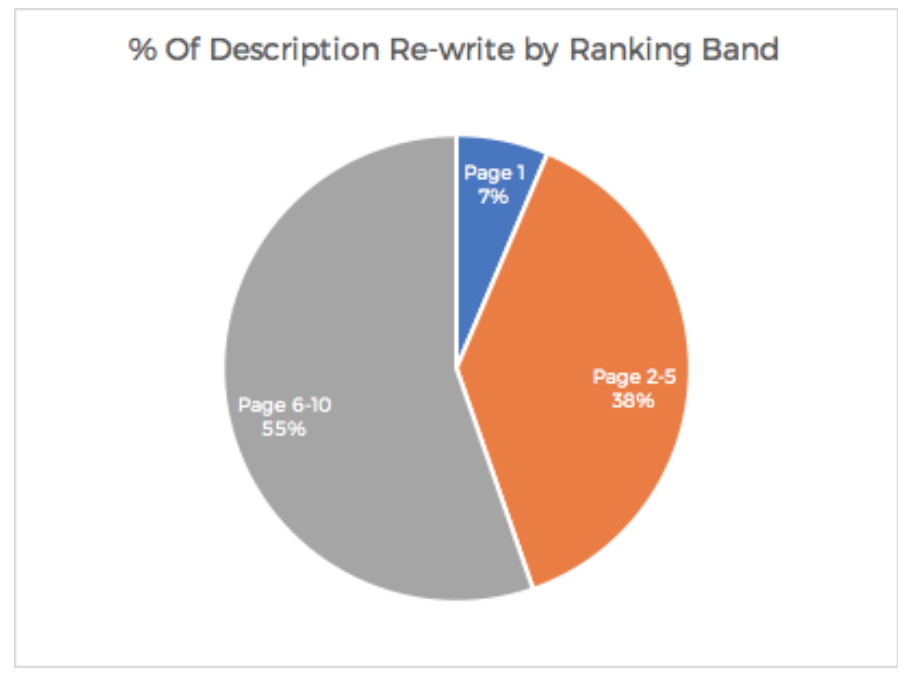
Just looking at one site in this way means we need to be careful about the kind of conclusions we can make, but it’s very clear here that the vast majority of description rewrites were of URLs ranking page 2 or lower – 93% of them.
A possible reason behind this may be that pages ranking on page 1 are (in theory) better suited towards matching those queries – whether they’re “optimised” or “naturally good” (whatever that means). In this instance, we could suggest that IF a description is appropriate, Google is less likely to rewrite it.
Conversely, for pages which don’t rank on page one, they’re less likely to contain a meta description which is appropriate and therefore more likely to need one to make the result feel relevant from the SERP.
Some examples
Homepage – 17% Match Actual
The homepage features heavily within the data set – perhaps unsurprisingly for any brand like this. However, with only 17% of the descriptions seen in search matching that of the page, we can assume one of two things:
- The description on page changes frequently, so the scape of the SERP was right, but now isn’t.
- The descriptions on the page aren’t relevant for the queries as we see them.
Many of these SERP snippets, whilst not 100% matching the descriptions are 80-90% there. With the recent turbulence of Maplin on the high street, it appears that the description has changed as per a new site launch/refresh.
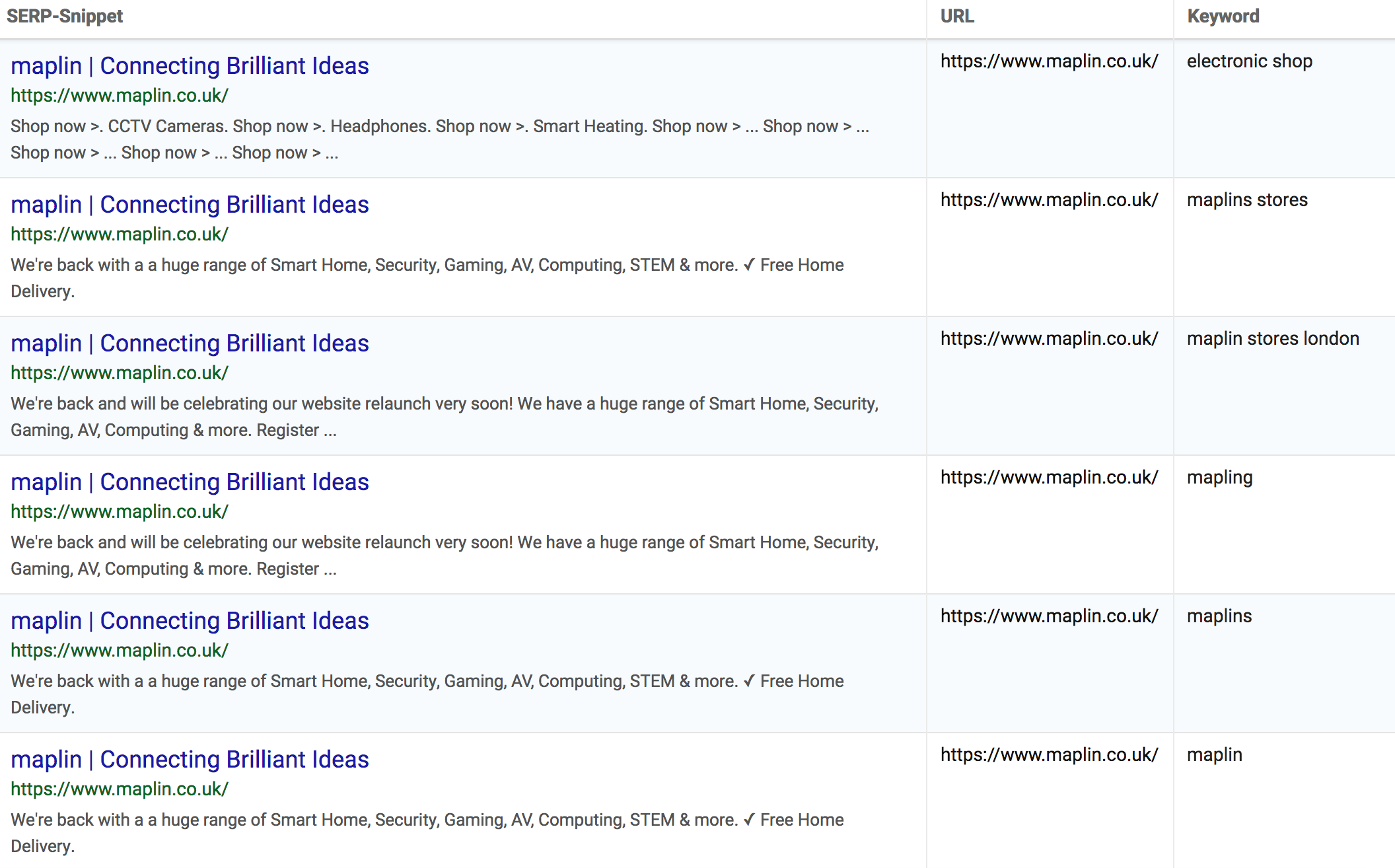
At this stage comes the realisation that Maplin may have not been the best contender for this study. The homepage description itself changed regularly when the data was acquired, whereas the description used for reference was the one scraped on 16th March 2019.
The URL history (below) clearly shows some seismic changes in search – so it’s fair to expect Google to be making some of its own decisions over meta descriptions – amongst other things!
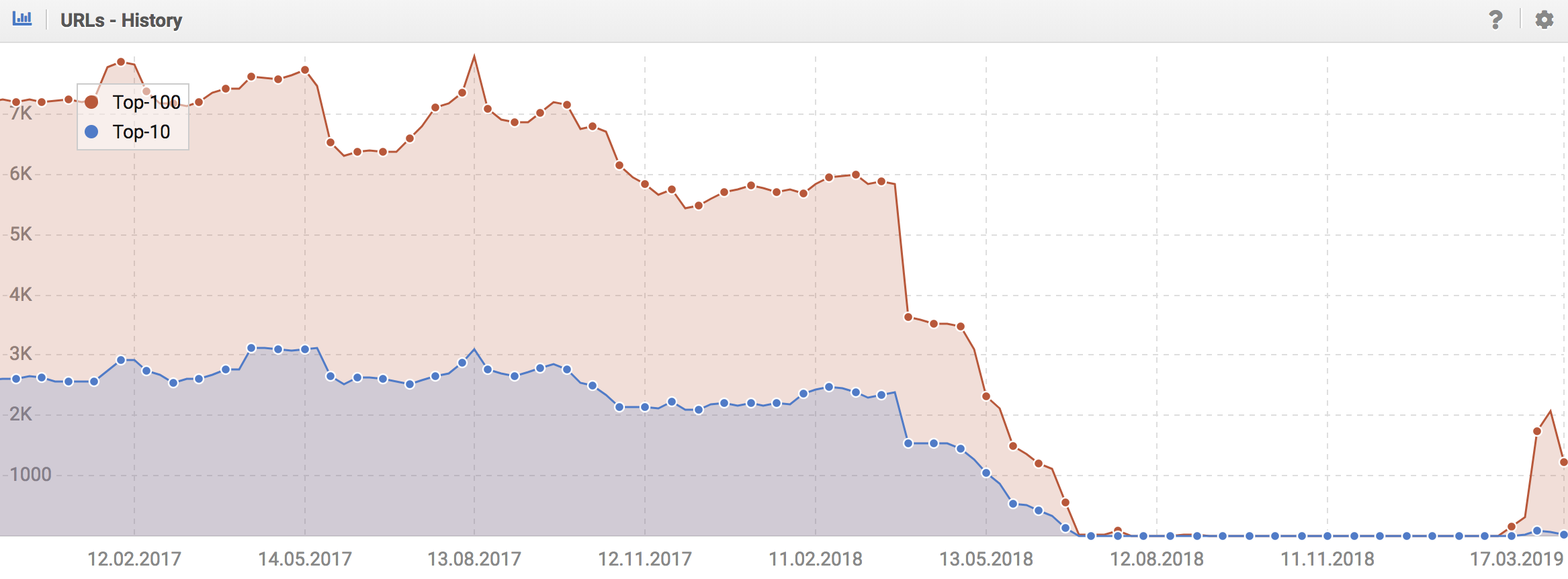
A future point for further work here would be to scrape the actual description at the same time as the result itself. At least then we know that the variance we see is Google itself and not the method of collection.
AV Cables – 0% Match Actual
With 197 occurrences in the sample and 0% matching the scraped meta description, it was well worth delving into the AV Cables category.
Keeping in mind the potential pitfalls of comparing just to the meta description scraped on a given day, 142 of these descriptions are different from each other – 72% are different from each other, let alone from the page.
The terms which this page are ranking for are incredibly diverse (even within AV cables), so it’s almost reassuring that Google is trying to better cater for search intent when the page’s own description does not (and perhaps can’t) do enough by itself.
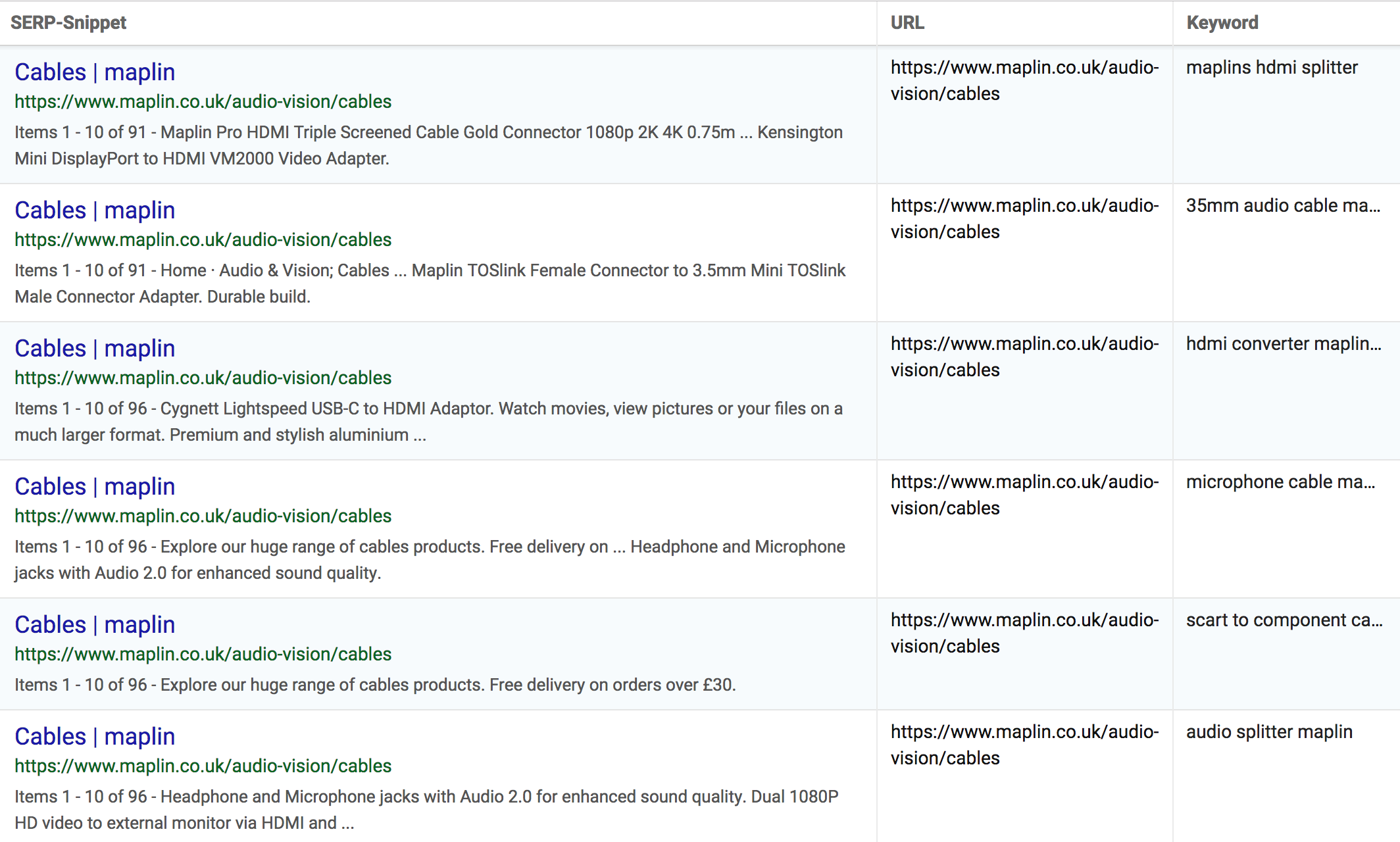
Google is clawing whichever product from the category it can to make the description more appealing. Is this more appropriate than “Explore our huge range of cables products. Free delivery on orders over £30”?
A more important consideration may be whether some of these terms should be ranking product pages, rather than the category. Perhaps this level of description rewrites is symptomatic of a greater problem – in this case, are the product pages just too weak or are there some more subcategories which could be advantageous?
In-Car Radios – 13% Match Actual
Here is another category where a large proportion of descriptions were rewritten, but the cause/impact of this is far less pronounced.
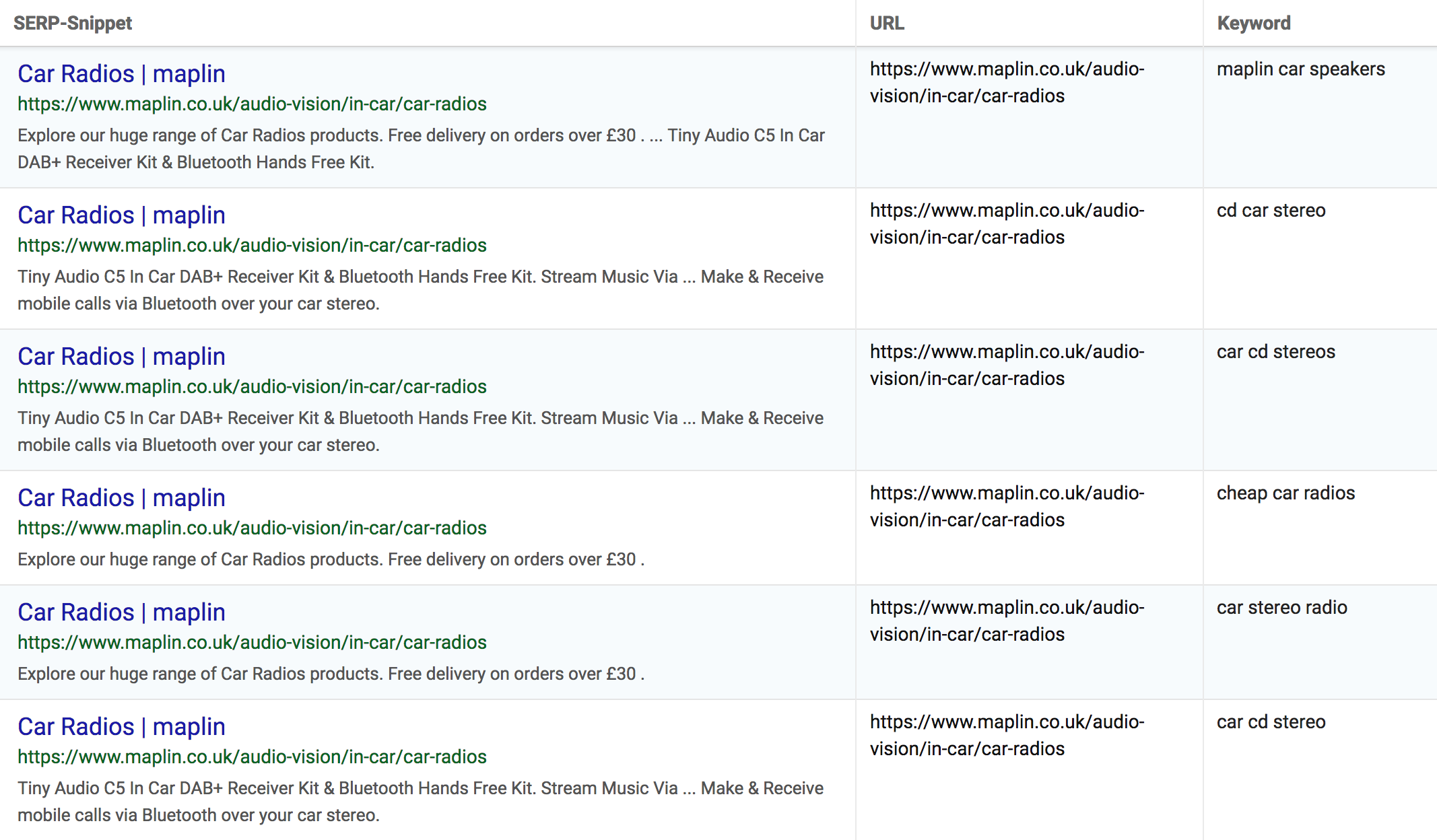
To contrast two different descriptions with very close matches:

Similar intent keywords, although two different USPs called out for the products being able to make and receive calls via Bluetooth and streaming music via the stereo.
Nothing earth-shattering in its significance here, except that the page and queries aren’t different enough to need this level of change (as far as I can see). Something somewhere has determined that a difference could be required – it is being altered right down to the minutiae.
Conclusions
Just a short look at this data for one domain, I am both inclined to care less about painstakingly writing meta descriptions and to focus more on them. Let me explain.
Meta descriptions appear to be rewritten a lot – and in some instances, in small and seemingly insignificant ways. When you put this to the backdrop of Google changing snippet length within SERPs and the angst it caused some who have been trying to make them “perfect”, it produces a sure-fire recipe for frustration.
Yet, as Google seemingly changes the descriptions of pages ranking on page one less than any others, it could indicate that those which are changed are somehow more in need of our attention.
The following example for “usb chargers”, which ranks (well) in position 3, proves my point.

The SERP-snippet displayed couldn’t be further from the description on the page:

Ranking in the top three positions * for a high-traffic term and boasting to Google about a range of “USB Chargers products” – which thankfully it’s ignoring – highlights a clear need to look properly at category content.
Looking at more of the descriptions, you can see there’s a template for descriptions at work; “Explore our huge range of {{category name}} products. Free delivery on orders over £30”. I’m not judging that it is something which can/does work for many websites (especially when budgets are tight); however, for those pages ranking on page one for competitive queries, you need to make an exception.
So descriptions can be a good barometer for overall content quality. I believe they could and should be a great indicator for search intent, most likely where they’re being rewritten, not where they’re taken “as is”. The difference between your written description and the one Google writes for you could provide to be a nuanced-yet-powerful one. It could be worth spending more time delving in here.
But this is a very small study. You would need to alter some key elements of my approach AND run through a far greater sample to begin to say anything concrete about how frequently Google rewrites a page’s description for SERP snippets, and in which circumstances these are most likely.
If anyone has any further thoughts/ideas on the subject, please get in touch with me via Twitter.
* Sadly, not anymore


















